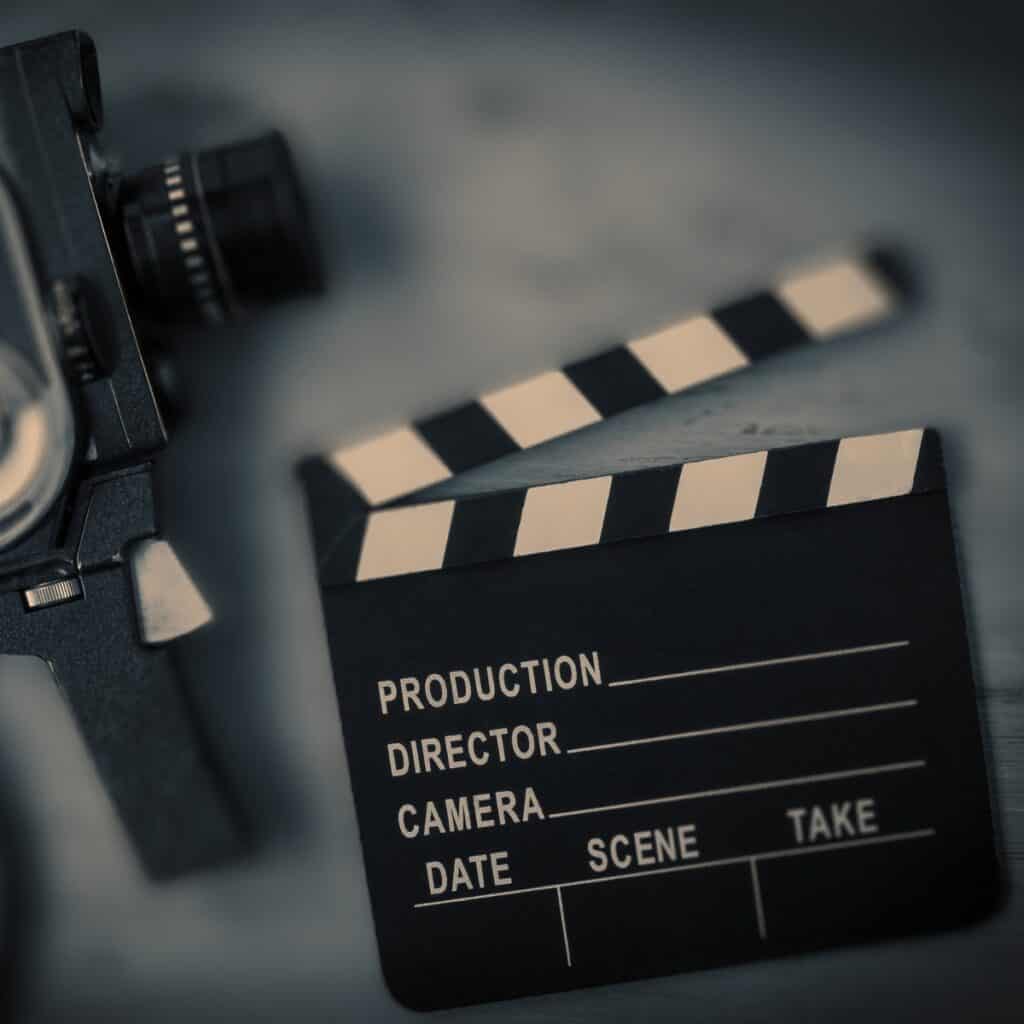Clapperboard: why it’s essential in making movies
A clapperboard is a device used in filmmaking and video production to assist in the synchronizing of picture and sound, particularly when working with multiple cameras or when dubbing a film. The clapperboard is traditionally marked with the production’s working title, director’s name, and scene number.
The clapperboard is used to signal the start of a take. When the clapperboard is clapped, it makes a loud noise that can be heard on both the audio and video recordings. This allows the sound and picture to be synchronized when the footage is edited together.

The clapperboard is also used to identify each take during editing. This is important because it allows the editor to choose the best take for each scene.
The clapperboard is an essential piece of equipment for any film or video production. It is a simple but essential tool that helps to ensure that the final product is of the highest quality.
Did you know?
- The clapper dates from the time of the deaf-mute film, when it was the most important instrument to indicate the beginning and end of film recordings?
- The Clapperloader is generally responsible for the maintenance and operation of the clapper board, while the Script Supervisor is responsible for determining which system will be used and which numbers a particular take should have?
- The board shows the name of the movie, the scene and “take” that is about to be performed? A camera assistant holds the clapper board – so it’s in view of the cameras – with the film sticks open, speaks the info on the clapper board aloud (this is called “voice slate” or “announcement”), and then closes the film sticks as a start sign.
- Does the film board also have the date, the title of the film, the name of the director and director of photography and the scene information?
- Procedures may vary depending on the nature of the production: (documentary, television, feature film or commercial).
- In the USA they use the scene number, the camera angle and take number e.g. scene 3, B, take 6, while in Europe they use the slate number and take number (with the letter of the camera that is recording the slate if you have multiple cameras used); e.g. slate 25, take 3C.
- The clapping can be seen (visual track) and the loud “clap” sound can be heard on the audio track? These two tracks are later accurately synchronized by matching sound and movement.
- Since each take is identified on both the visual and audio tracks, movie segments can be easily linked to audio segments.
- There are also clapperboards with built-in electronic boxes that display SMPTE time code. This timecode is synchronized with the camera’s internal clock, making it easy for an editor to extract and synchronize the timecode metadata from the video file and sound clip.
- The electronic time code can change during a day of shooting, so if the digital time code does not match, one still has to use the manual film board clapper to ensure that the images and audio can be manually synchronized.
It’s fun to get a film board clapper just for these interesting facts.
Hi, I'm Kim, a mom and a stop-motion enthusiast with a background in media creation and web development. I've got a huge passion for drawing and animation, and now I'm diving headfirst into the stop-motion world. With my blog, I'm sharing my learnings with you guys.

